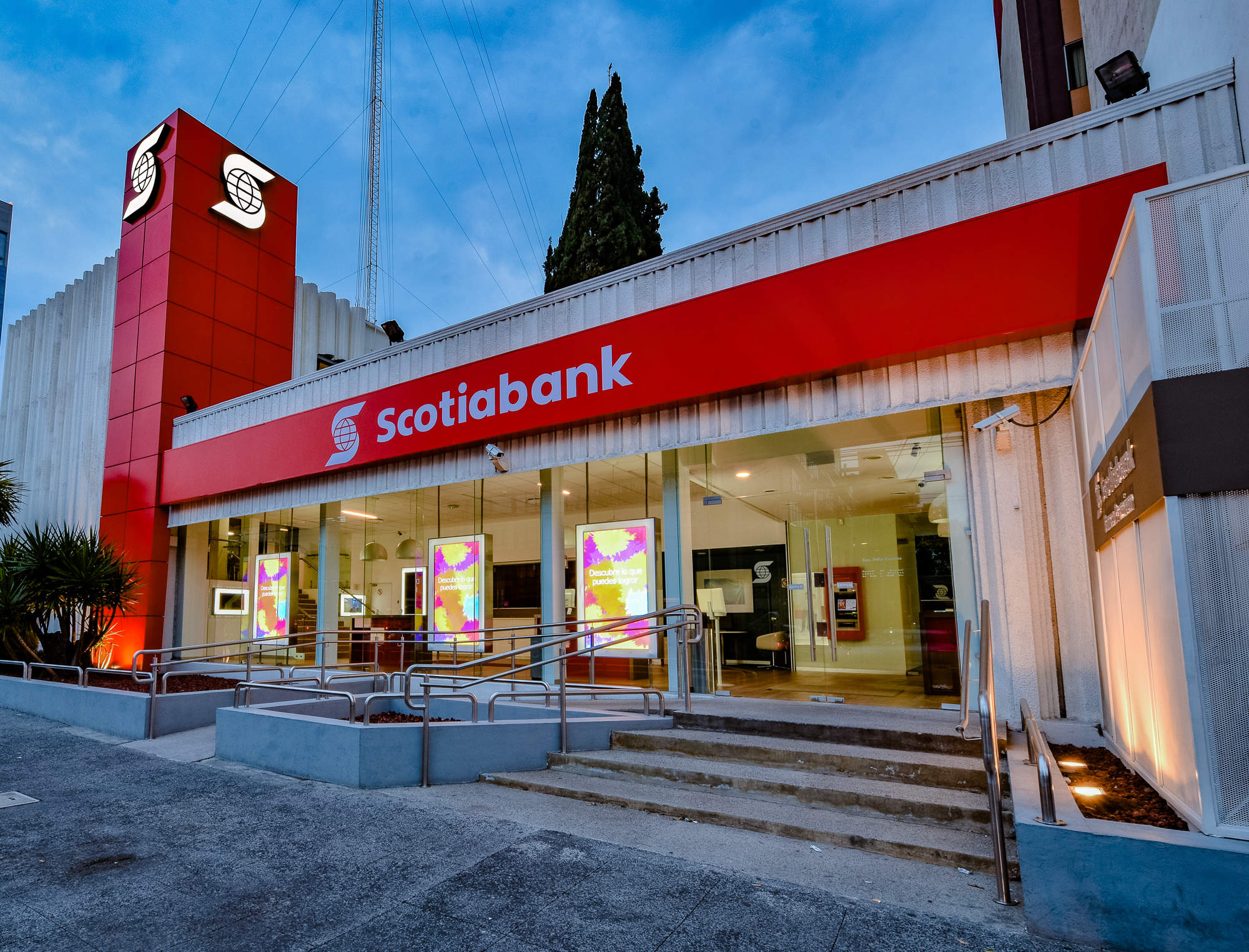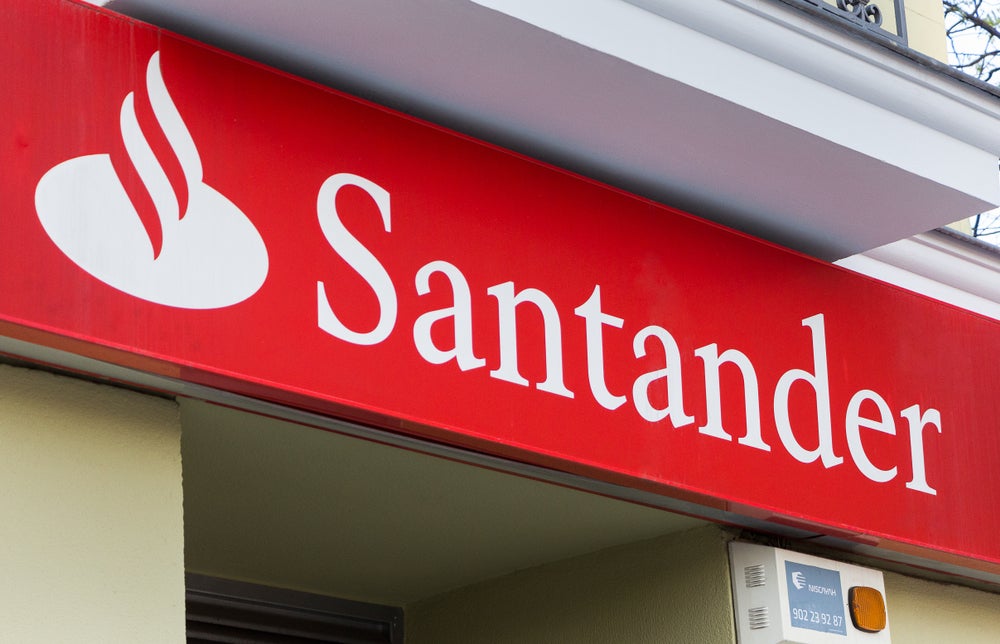
Scotiabank is rolling out a digitally enabled customer-centric branch design across its Latin American and Caribbean (LAC) operations. Robin Arnfield talks to Katherine Hayward, vice-president of customer experience and retail banking at Scotiabank International, about the bank’s objectives and strategy
Scotiabank serves 9.5 million retail customers across 1,500 branches in 29 countries in the LAC region. Scotiabank’s Mexican unit, with 600 branches and 2.7 million customers, is the largest subsidiary in the region, followed by Colombia (1.6 million customers) and Peru (1.9 million), both with 200 branches.
In addition to its own branches, Scotiabank partners with correspondent banking agent networks in Mexico and Peru.
“In Mexico, our customers have access to 18,000 non-bank locations through our relationships with [retailers[ Oxxo, Soriana and City Club, where they can make deposits, pay credit card bills, and withdraw cash,” Hayward tells RBI. “In Peru, customers can access 5,000 non-bank locations through the Agente Scotiabank and Cajero [cashier/teller] Express correspondent agent networks, where they can make deposits, pay credit card and utility bills, access loans as well as top up their cellphones.”
Scotiabank’s LAC branch redesign programme is taking place in tandem with a major digital investment in Canada and the LAC region. This includes the launch of a new version of Scotiabank’s online and mobile banking platform in Mexico and 21 Caribbean countries, with Chile and Panama due to go live on the new platform shortly.
“Following the opening of our Canadian digital factory in January 2017, we will also open digital factories in Chile, Colombia, Mexico and Peru this year,” Hayward says.
“The goal with our new, simpler-to-use digital banking services is to increase our primary customer relationships through digital technology.”
How well do you really know your competitors?
Access the most comprehensive Company Profiles on the market, powered by GlobalData. Save hours of research. Gain competitive edge.

Thank you!
Your download email will arrive shortly
Not ready to buy yet? Download a free sample
We are confident about the unique quality of our Company Profiles. However, we want you to make the most beneficial decision for your business, so we offer a free sample that you can download by submitting the below form
By GlobalDataBranch redesign
“We try to build new branches every year as our markets are developing much more rapidly than the Canadian market,” says Hayward. “As well as looking for opportunities to find new locations, we’re always trying to be where our customers are in our existing markets.”
Working with international design consultancy Ideo, Scotiabank created a set of branch design standards for its LAC branches, which it will apply selectively for refurbishments and new builds.
“Our aim is to be extremely customer-centric,” says Hayward. “We liked Ideo’s approach of doing ethnographic research and prototyping design concepts with customer at the heart. To find out what our customers wanted in branch, we conducted ethnographic research involving accompanying them into their homes and offices on a day-to-day basis, and following them when they conducted financial transactions.
“Our new branches are notably more digital with a host of self-service technology available, concierges to explain the technology, tablets for some staff, and digital messages displayed throughout the branch.”
Scotiabank has a consistent customer experience model across all its subsidiaries, Hayward says. It also has an in-house-developed geographical information system (GIS) tool which maps all its locations and all its competitors’ branches.
“The tool uses market data to show current and projected growth for these locations,” says Hayward. “We can see which markets are up and coming, and where we need to move to in order to be in the right place at the right time for our customers.”
What are Scotiabank’s goals?
“At the start of our redesign programme, we set three high-level goals: improve our customer experience in branch via the overall design, differentiate ourselves in our markets, and improve our efficiency and effectiveness in our network,” says Hayward.
“We want our branches to be places where customers can learn about our digital and self-service technologies. Also, towards the rear of the branches we’re providing a pleasant area for customer interaction with our staff.
“We’re putting strong brand messaging on our flagship branches and using large digital displays to differentiate them. The effectiveness and efficiency goal relates to our new hub-and-spoke model.”
Since November 2016, Scotiabank has been deploying a new Net Promoter System in Canada and the Pacific Alliance countries of Chile, Colombia, Mexico, and Peru.
“It’s important to get rapid feedback from clients and bring the voice of the customer to the heart of our branches and contact centres,” says Hayward.
“We partnered with [customer feedback specialist] Medallia on this initiative. We use the word ‘system’ not ‘score’, as we have a feedback loop direct from customers to staff in the branches so they can act on issues.
“We encourage our branch managers to call three to five clients once a week to follow up on the feedback they received in the branch, and we have a similar policy in the contact centres. Once we identify issues, we make sure they are escalated and any systemic issues are addressed, as well as making sure customers know their issue has been responded to.”
Hub and spoke
“We are moving to a hub-and-spoke model, so we can focus resources on where they are most needed. This will enable us to reduce the size of spoke branches,” says Hayward.
“The hub is where we have services for segments such as small businesses and premium banking, and our spokes are about convenience banking.
“Our customers are still heavy branch transactors, so there’s a big opportunity for us to introduce them to our new digital channels that we are bringing on board in LAC. As they start to adopt our digital channels, there will be less demand for teller services in spoke branches, so we will be able to reduce their size.”
In Scotiabank’s new design there are four formats: the regional financial centre, which includes a Premium Banking centre; the Community Banking Centre; the Neighbourhood branch; and the in-store/bank-at-work branch.
Around 25% of Scotiabank transaction in the LAC region are still branch-based, and the bank’s goal is to cut this to 10% by 2010.
“A lot of our customers will queue up to use a teller, as they don’t know how to use an ATM,” says Hayward. “There are a lot of transactions they could either perform on our digital channels or at a correspondent agent, instead of in a branch.”
Financial education
“The new concept is centred on financial education, aligned with our core belief that every customer has the right to become better off,” says Hayward.
“We found in our research with Ideo that there is a lack of providers of financial literacy in our markets. Yet financial literacy is an important skill, so there’s an opportunity for us to be involved in the community. We hold Scotia Presents financial literacy events offering refreshments where we teach basic financial matters like: What is a credit score? How do you improve it? And how do you teach children about savings? Historically, many of our markets aren’t retirement-savings cultures but are consumer cultures focused on obtaining credit to make purchases.”
Instead of traditional product messages, Scotiabank is rolling out messaging containing ‘hints and tips’ about financial literacy along with customer stories in its LAC branches.
The messages are provided via a mix of digital displays and large static back lights.
“The stories feature Scotiabank customers saying things like: In my new house I have rooms for all my children; with my new car I can get to work on time,” says Hayward. “The financial advice aims to help customers reach similar goals to the people in our stories, such as ‘your mortgage and bills shouldn’t exceed 40% of the household budget,’ or ‘if you’re buying a home, budget for legal expenses.’”
Three zones
As part of the new design, the branch is divided into three zones: a Welcome Porch, a Social Zone, and a Business Zone.
“The Welcome Porch features a new Concierge role as the first point of contact for customers and to helps educate them on the self-service channels available,” says Hayward.
“The Social Zone is a warm environment in the centre of the branch where staff can engage with customers in casual meeting spaces, and where we hold Scotia Presents financial educational events.
“Tablets are provided for customers to use for digital banking and product information, and to access our Mi Plan goals-based financial planning tool.”
Tellers are housed in the Business Zone at the rear of the branch, and officer workstations have been given a refresh. The reason for putting tellers at the back of the branches is to encourage customers to explore the space first before reaching the tellers and to enable the concierge to talk to them about self-service channels.
“As we continue to enhance our technology, we envision our sales staff being completely mobile throughout the branch,” says Hayward. “A portion of our branch network has a special Premium Banking offering, designed for our mass-affluent segment. So we upgraded the Premium Banking centre design with upscale finishes as part of the new concept.”
The Premium Banking centre features an exclusive area in the branch where customers can read news on tablets and newspapers while waiting to meet investment specialists and premium relationship officers.
“In our markets, premium customers expect to be given more recognition and a distinguished service,” Hayward says.
“In our flagship locations, we’ve introduced large external digital displays to support our brand presence and differentiate ourselves in the marketplace. We’re not the only ‘red’ bank in Latin America, and sometimes our branches are located next door to a rival, such as Santander. So we use our full colour palette to help create a distinctive identity. As a result, Scotiabank’s branches in the region are not fully red, as they are in Canada.”
Pilots
Working with Ideo, Scotiabank built four digitally enabled branch prototypes in Mexico City in early 2016, which it uses as the basis for its new branch design standard. These range from a flagship branch with specialist services down to a small, in-store branch.
“The four pilot branches in Mexico are performing well in terms of sales growth and customer experience, and are ahead of the Scotiabank network average in terms of customer experience and sales growth,” Hayward says.
“The number of branch transactions in the pilot branches are decreasing faster than the average, because of customers’ adoption of self-service channels. Many of our Mexican branches have external ATMs, and Mexico is a security-conscious market. One of our learnings for our new design was to put ATMs inside our Mexican branches so the concierge can tell customers how to use the system and because customers feel safer using an internal ATM.”
Scotiabank plans to deploy digitally enabled branch pilots in Chile and Peru in mid-2017, which will use the design formats deployed in the Mexican pilot branches. It will also roll out the new design formats in Barbados, Costa Rica and the Dominican Republic during 2017.
“In both Chile and Peru, we will also pilot a tellerless branch, which will be purely digital, with ATMs, intelligent deposit terminals, and sales staff equipped with tablets,” says Hayward.
“We already have tellerless Scotiabank Express and Scotiabank Solutions digitally enabled branches in Canada.”
Scotiabank aims to adjust its branch design formats for individual countries across LAC, reflecting local market characteristics, Hayward concludes.
“Clever but not enough”
“Scotiabank has created an excellent framework that will enable its branches to involve themselves with the community by providing facilities in their branches,” says UK-based international retail banking consultant David Cavell. “There are so many things Scotiabank can do in its redesigned branches. Currently, they are acting as a mediator between the physical and the digital. It’s a clever position to be in right now but its not enough.”
Banks need to offer neighbourhood branches that reach out to the local community, Cavell says. “This is fundamental. The critical success factors are brand, location, branch design, and staff competence. Brands must use activities that take place in branch and reflect the brand’s differentiation to reach out to the community.
“There is a playbook of around 50 non-banking activities you can do in a branch to provide greater value for the community. If digitally enabled branches are to evolve from being transaction shops and have a worthwhile role to play in the future, they must be more about the communities in which they reside. Turning a branch into a limited assisted-service or self-service centre is missing the opportunity of what you can do with a branch.”








